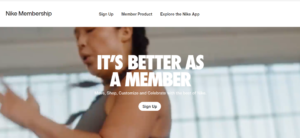Balancing resource and intentionality, here are strategies to look into if you’re looking to create an online shopping experience that genuinely connects with your buyer.
In the 21st century, personalization is what customers want from brands. As this approach converts better, it has become one of the crucial aims for businesses. But it’s always highly challenging to come closer to the audience as it’s so large and diverse.
Below we’ll consider five actionable directions to follow if you want to guarantee a personalized experience to your clients. Product builders, chatbots, and push notifications may become wholesome technical novelties in your online store.
Besides them, we’ll discuss how to improve recommendation sections and newsletters to make them truly personal.
1. Product Customizers
Such an option allows users to create items to their liking in terms of a color scheme, print, shape of elements, lettering, and extra details. This individualization of mass production is not only trendy and profitable but also suitable for many industries.
Clothing, footwear, and accessories, electronics, furniture, and car manufacturers leverage customizers. Take a look at the screenshot from Kendra Scott, an accessories maker. Visitors can choose colors of metals and stones to get a unique piece.
Screenshot taken on the official Kendra Scott website
The successful implementation of a configurator is closely connected with the technical condition of your website. All changes in the item must be applied in milliseconds. Therefore, the performance of your online store has to be superior. One of the sought-after methods to improve it (and a number of other essential parameters) is to transform a website into a PWA. Check out some impressive progressive web apps examples for inspiration.
2. Smart Product Recommendations
According to a survey by Google, 61% of consumers expect brands to provide custom experiences in line with personal preferences. Another step you can take to achieve this is to rethink your product pages.
Many brands don’t have “You may also like” blocks which is weird. Wisely organized recommendations improve the odds of conversion and sometimes can serve for up and cross-selling.
Below there is a screenshot from FARFETCH. This marketplace has all the features to win more orders: “Complete the look,” “Recently viewed,” and “Recommendations.” The latter section offers me commodities in similar styles to a particular item.
I was looking for the midi skirt with an unusual hem: the algorithm showed me many more options to consider. It would take me some time to find all these goods manually.
I’m therefore spared the need to look through many pages or set numerous filters.
Screenshot taken on the official FARFETCH website
3. AI-based Chatbots
Virtual assistants increasingly spread across eCommerce websites and Facebook accounts. This technology can’t entirely displace humans in customer support, but it is a huge aid in many cases. Nowadays, chatbots are able to answer FAQs, navigate users, give info about orders, make general product recommendations, and call for live agents in more complicated cases.
Look at the screenshot below: there is my conversation with JBL’s bot. I was lazy to search for warranty-related information, so I turned to the virtual assistant. It instantly understood what I’m looking for and gave me the relevant link.
Screenshot taken on the official JBL website
4. Push Notifications
This functionality allows brands to reach clients directly. Unlike emails, notifications are always visible. Note that push notifications can be set not only for mobile apps but also for websites. There are still restrictions regarding notifs from web apps on iOS, but there is no problem for Android. Don’t miss the opportunity to tighten links with your audience this way.
Nevertheless, be cautious about what you send people. Don’t bother them with everyday notifications, and don’t share everything that’s changing in your online store. Instead, tell customers when items from their wish lists go on sale, the next big sale start, and the new limited collection is finally here.
In the screenshots below, there is the anti-example of an irrelevant notification from Adidas. I’d be glad to see something like a new Yeezy drop rather than the team GB Olympics outfits. To be honest, I opened the page only for the sake of saving this example!
Screenshot taken on the official Adidas mobile app
5. Personalized Emails
Automation and AI are the level-up for your send-outs. To accustom people to open your newsletters, you should ensure valuable content that is as personalized as possible. Now technologies allow you to deeply analyze purchasing behavior and use the results for targeted messaging.
So, pay attention to actions that every customer performs on your website. What they seek for, which goods they mark as liked, what they leave in a cart without completing the order. For instance, it’s a good practice to send these items from an abandoned cart as a reminder (possibly even with a little discount).
In the screenshot below is a letter from Levi’s. Their algorithms noticed that I left the store without buying jeans. They’ve sent the contents of my cart back to me. For instance, I could be distracted on the stage of ordering; then, such a letter is very handy.
Further, Levi’s added a couple of blocks with other offerings. Some brands use AI to create personalized selections of products that have higher chances to match one’s tastes (and be purchased then!)
Screenshot taken from the newsletter from Levi’s official website
Wrapping Up…
Personalization is amongst the most effective ways to live up to customers’ expectations. While some of the measures listed above take considerable time and money to implement (e.g., product builders), others are not so costly and applicable fairly simply (e.g., product recommendations).
However, our advice is to consistently integrate all these personalization means to ensure a flawless customer experience.




